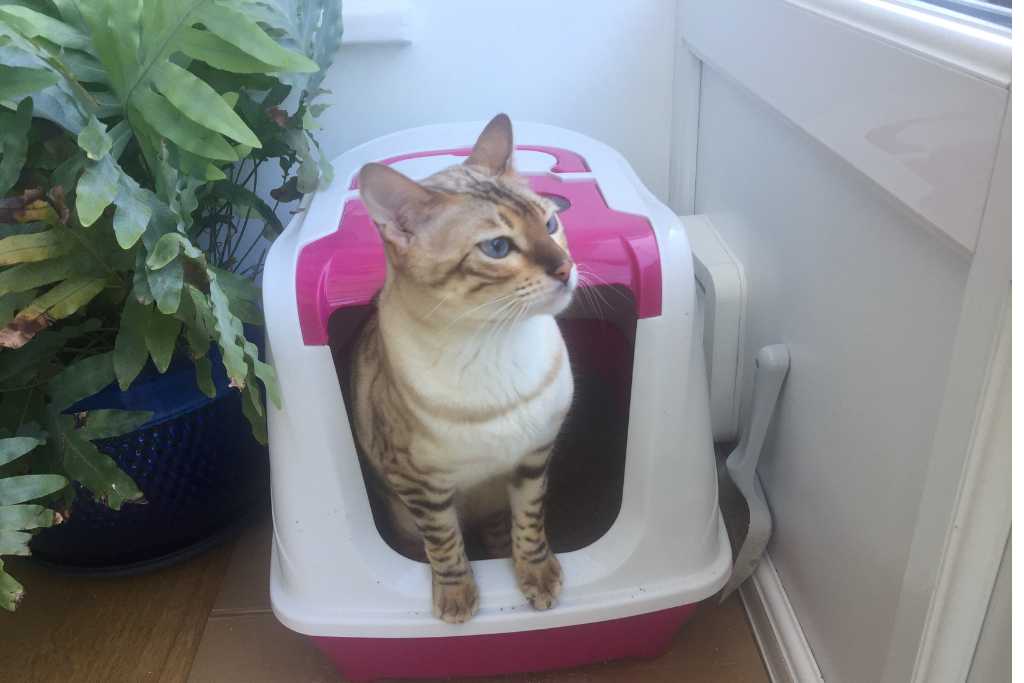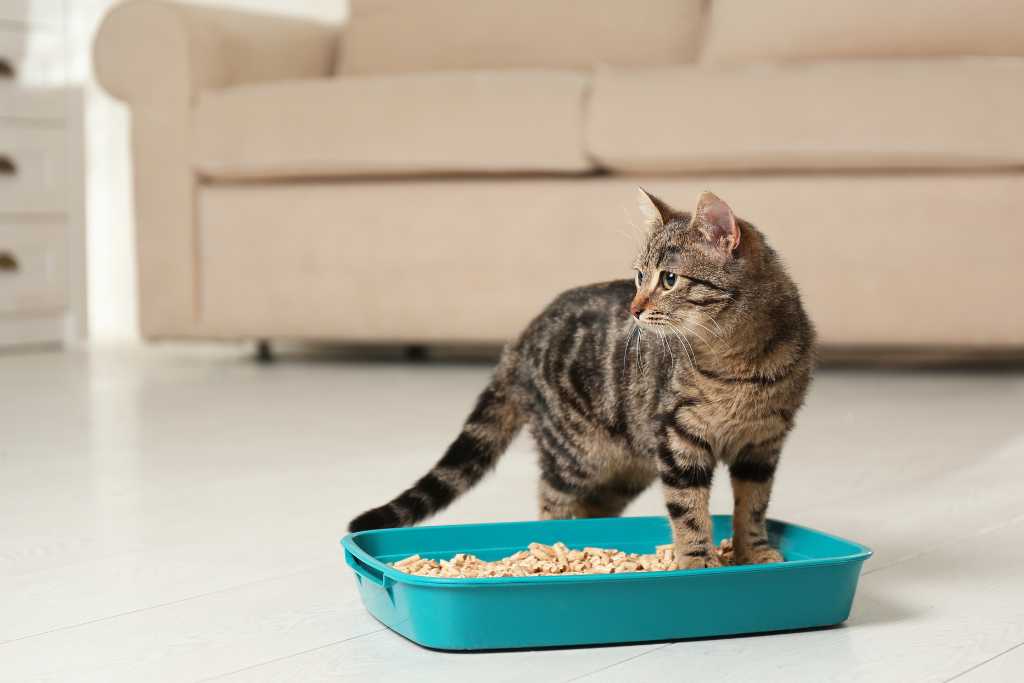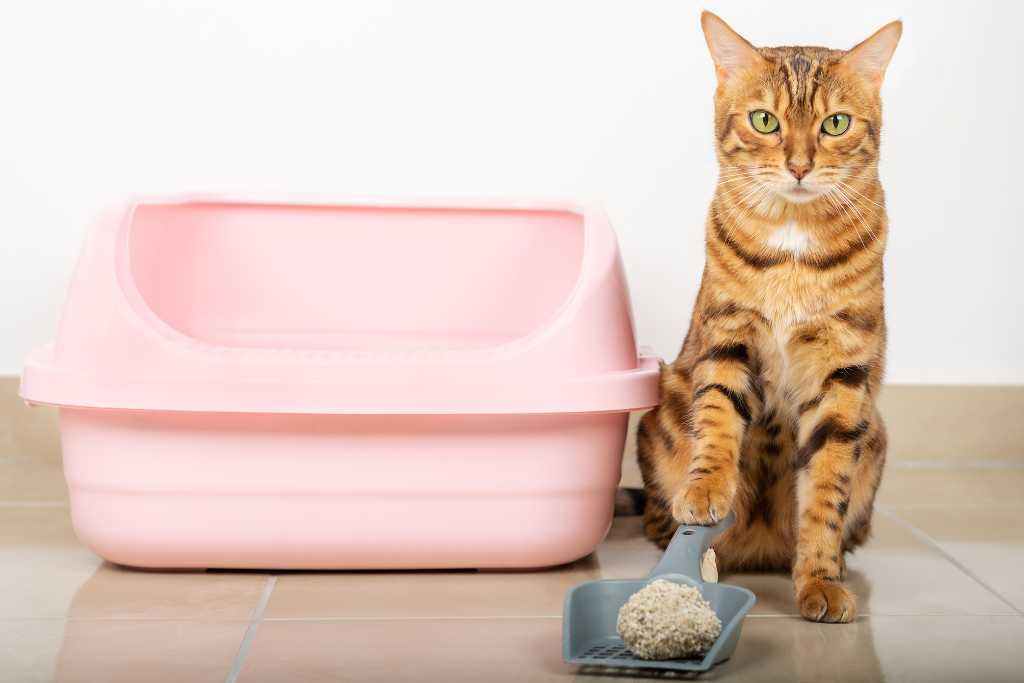AWAY FROM FREE SHIPPING
NICE. SHIPPING IS ON US!
AWAY FROM FREE GIFT
CHOOSE A FREE GIFT DURING CHECKOUT!
YOUR CART IS EMPTY. SHOP NOW.
Cats are beloved pets, providing companionship and entertainment to millions of people around the world. However, cat owners also know that these furry friends can sometimes present a few challenges. One such challenge is the use of litterboxes and dealing with potty problems. In this article, we will provide a comprehensive guide on how to choose the right litterbox, how to train your cat to use it, and how to deal with common issues that may arise.

There are a few factors to consider when choosing a litterbox for your cat. Here are some things to keep in mind:
Size
The litterbox should be big enough for your cat to comfortably turn around in and dig around in the litter. If your cat is particularly large, you may need to choose a larger box.
Depth
The depth of a cat's litterbox depends on the preference of the individual cat. However, as a general guideline, the litter should be deep enough to allow your cat to comfortably dig and cover their waste, but not so deep that it becomes difficult for them to move around. A depth of around 2-3 inches of litter is usually sufficient for most cats. Some cats may prefer a shallower or deeper litterbox, so it's important to observe your kitty’s behavior and adjust the depth of the litterbox accordingly. Additionally, if you have a cat with mobility issues, a shallower litterbox may be more appropriate to ensure that she can comfortably enter and exit the box.
Shape
There are many different shapes of litterboxes, including rectangular, oval, and corner models. Choose a shape that will fit comfortably in the space you have available.

Some litterboxes come with a hood or cover, and this is good for cats that like some privacy when they use the box. A covered litterbox can help to contain litter and reduce tracking. This design helps to prevent litter from scattering outside the box, which can help to keep your home cleaner. The design will also help to contain odors and reduce unpleasant smells in your home.
However, a covered litterbox can be more difficult to clean and maintain than an open litterbox. The hood and sides of the box can make it more challenging to scoop out waste and change the litter. This can lead to a buildup of moisture and odor inside the box which may discourage some cats to use the litterbox. Should you decide on a hooded litterbox, choose one that is designed to make cleaning up a breeze like this Unicharm Deo Toilet Cat Litter Box. The innovative use of zeolite and silica-based cat litter combines with the unique dual-tier design of the UniCharm litter tray effectively eliminating unpleasant litter box odours and helps to extend the mileage of your cat litter. You can sprinkle on some Deodorising Beads to remove unpleasant smells from your cat’s litter, making it smell fresh for longer!

Number of Boxes
It is generally recommended to have one litterbox per cat in the household, plus an extra box. This ensures that each cat has enough space to use the litterbox without feeling crowded.
Type of litter
Choose a litter that your cat likes and that is safe for them to use. Avoid litter with harsh chemicals that could irritate your cat's paws or respiratory system. Try to go for an eco-friendly cat litter like this Kit Cat Soya Clump Lavender Cat Litter that is 100% biodegradable, mildly scented, and non-toxic. Some cats can be picky about their litter preferences and may refuse certain types of litter. This can be due to a variety of reasons including the litter texture, scent, dust, clumping ability, or previous negative experiences with a certain litter. It's important to pay attention to your cat's litter preferences and adjust as necessary to ensure that they are comfortable and happy using the litterbox.

Most cats instinctively know how to use a litterbox, but there are a few steps you can take to make the process smoother:

As much as we love our feline companions, sometimes they can have issues with using the litterbox. Here are some of the most common potty problems and how you can address them:
Refusal to use the litterbox
If your cat is not using the litterbox, it could be due to an underlying medical issue such as a urinary tract infection. It's important to take your cat to the veterinarian to rule out any health problems before trying to address the litterbox issue. Once your cat has been given a clean bill of health, it may be helpful to try different types of litter or litterboxes to see if your cat prefers a certain style or texture. Additionally, moving the litterbox to a new location or providing a second litterbox in a different area of the house may encourage your cat to start using the litterbox again.
Urinating or defecating outside the litterbox
Stress or anxiety are common reasons why your cat is urinating outside of the litterbox. Cats are sensitive creatures and can become stressed by a variety of factors including changes in their environment, a lack of stimulation, or the presence of other cats. You’ll need to identify and address the stressor. You may also want to try a calming pheromone spray or a vet-formulated calming herbal supplement to reduce her stress levels. In severe cases, it may be necessary to seek the help of a veterinarian or animal behaviorist to help your cat manage their stress levels.
A dirty litterbox or a box that is too small may also discourage your cat from using it. As such, she may urinate or defecate outside the litterbox. Cats prefer a clean litterbox, so it's important to scoop out waste and clumps daily and change the litter completely once a week. Additionally, if your cat is large, she may need a larger litterbox to feel comfortable. Providing multiple litterboxes throughout the house may also help to encourage your cat to use the litterbox.

Scratching or digging in the litterbox
This often happens when the cat dislikes the litter texture or the depth of the litter. Some cats prefer a certain type of litter texture such as clay, silica gel, or recycled paper. Experiment with different types of litter to see if your cat has a preference. Additionally, some cats may prefer a shallower litterbox, while others may prefer a deeper box.
Spraying or marking
Cat spraying, also known as urine marking, is when a cat sprays urine on vertical surfaces, such as walls or furniture, to mark their territory. Unlike regular urination in a litterbox, spraying involves a small amount of urine, and the cat may stand up straight with their tail quivering or twitching while doing so. Cats may spray due to stress, anxiety, or medical issues, and unneutered male cats are more likely to spray than neutered males, as spraying is a way for them to attract females and mark their territory.
Ensure that your cat has enough resources and stimulation, and if your cat is unneutered or unspayed, consider having them spayed or neutered. This can help reduce spraying behaviour in male cats and prevent the behaviour altogether in female cats. If necessary, consult with your veterinarian to address this issue. It's important to address spraying behavior promptly, as it can cause damage to furniture and walls and create an unpleasant odor in the home. It is often necessary to use a powerful enzymatic cleaner like this Simple Solution (Regular) Stain & Odor Remover For Cats & Dogs to break down, neutralize, and permanently eliminate stains and odours, discouraging your kitty from making repeat “visits” to the same spot.

Litterbox problems can be frustrating for both cats and their owners. However, with some patience, perseverance, and a willingness to try different approaches, you can help your cat overcome litterbox issues and maintain a happy and healthy living environment. Remember to seek the advice of your veterinarian or a qualified animal behaviorist if you are experiencing persistent litterbox problems with your cat.

Comments will be approved before showing up.



